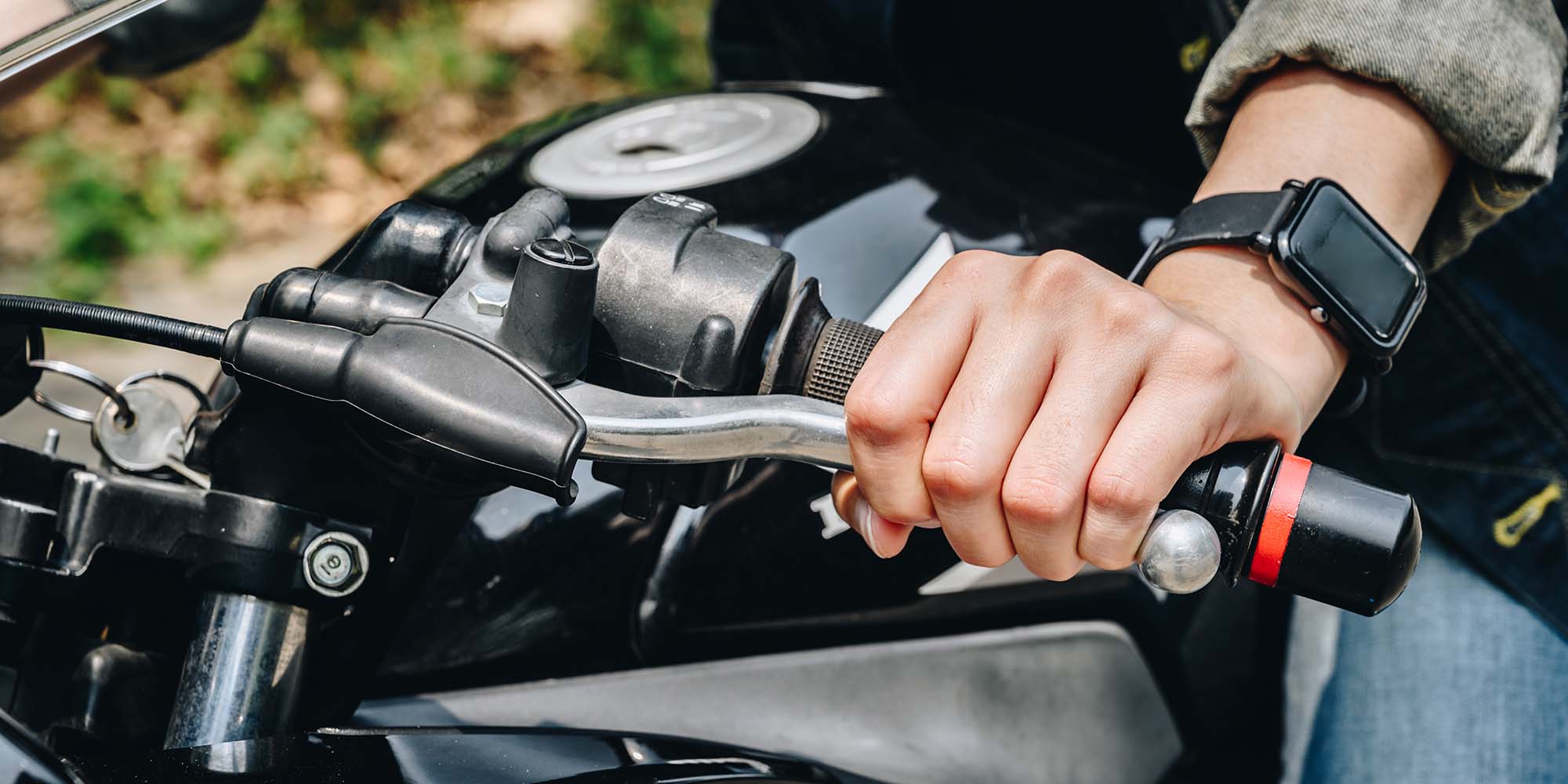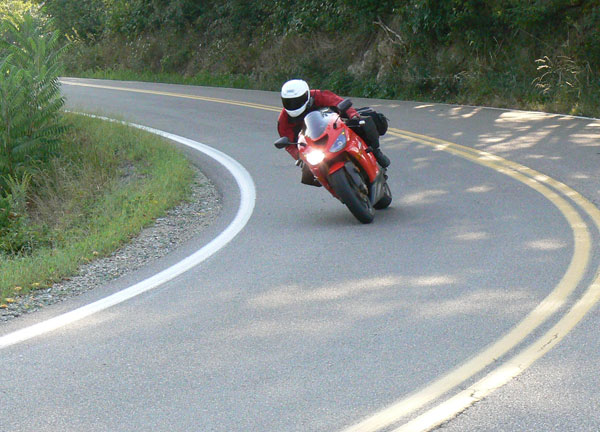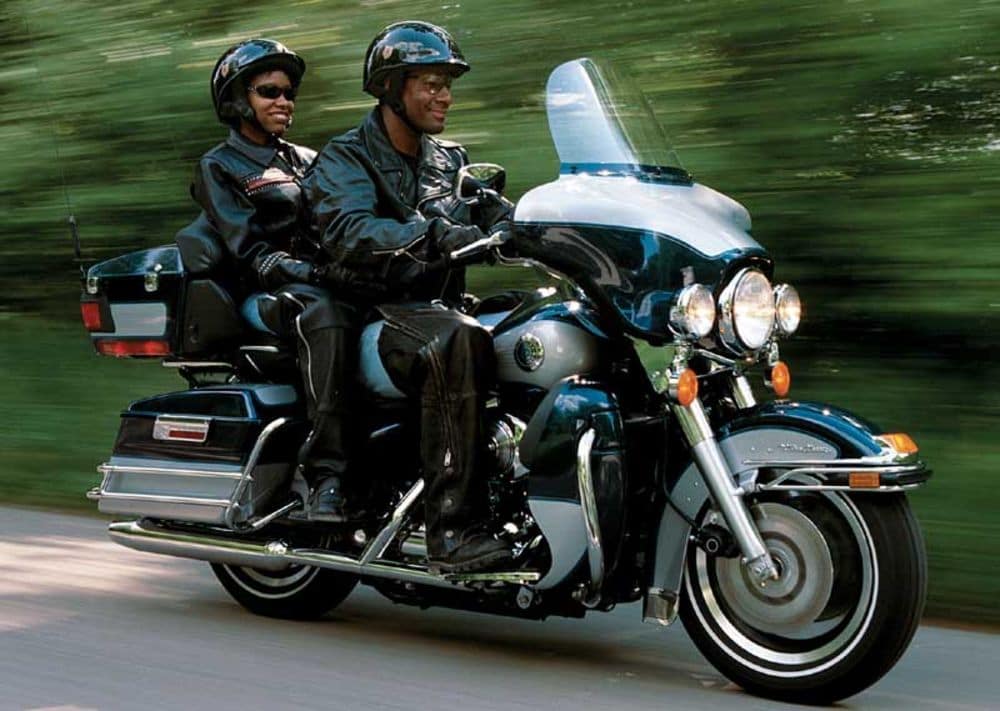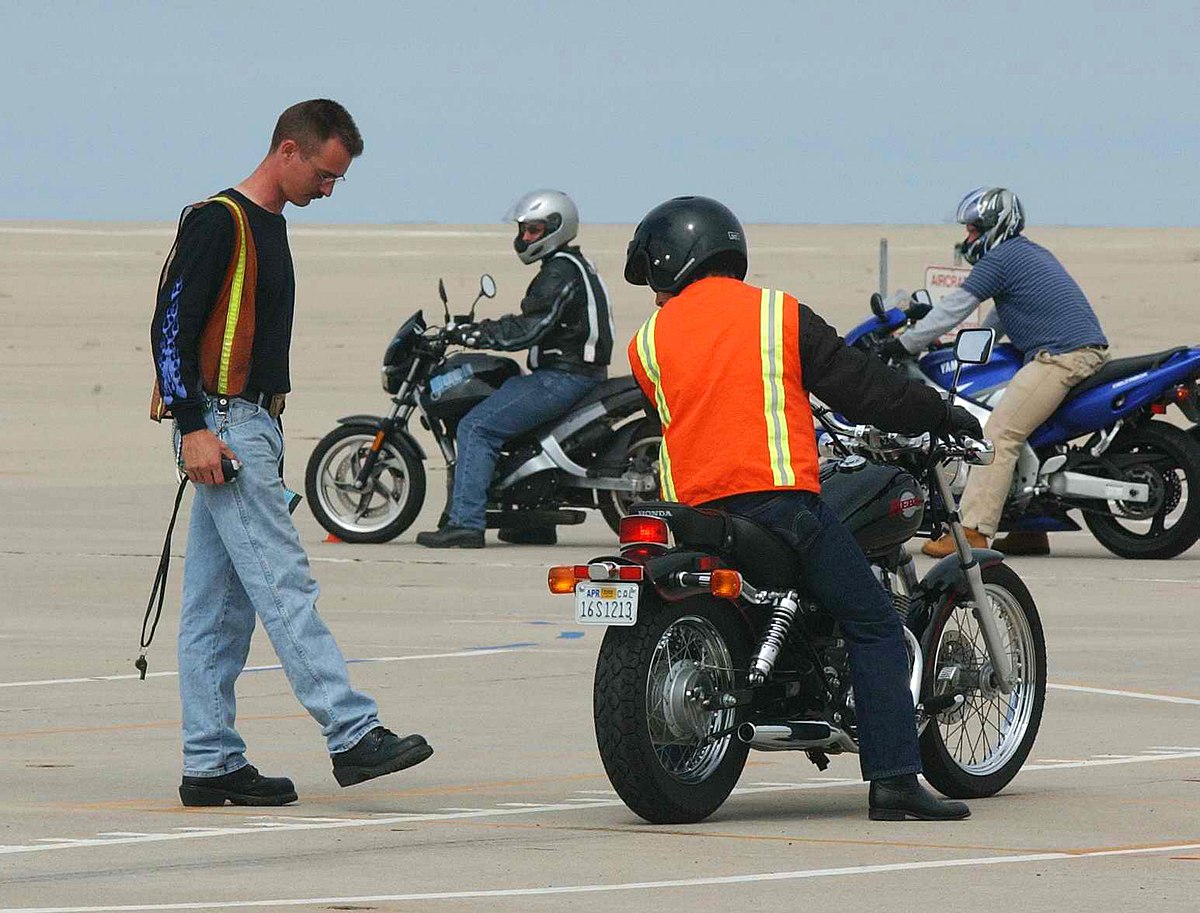
MASTERING MOTORCYCLE BRAKING: TECHNIQUES EVERY RIDER SHOULD KNOW
Ready, Set, Stop!
Courtesy: Harley Davidson Insurance
Good braking technique still matters, even as new advances help increase safety for everyone involved.
As a result, braking efficiently and effectively is a must when learning to ride a motorcycle. It’s one of the fundamental techniques you need to master.
Below, we’ll teach you everything you need to know about motorcycle braking so you can master this skill and reduce risk while on the road.
Common Motorcycle Braking Tips
1. Front or rear brake lever or both
Proper braking technique in most stopping scenarios involves keeping the bike upright (with no lean) and pointed straight ahead as you apply both front and rear brakes simultaneously in a smooth, controlled manner.
Pulling in the clutch and downshifting as you slow down all the way to first gear will assist in braking without requiring excess pressure to your front or rear tire for a complete stop.
Keep your head up and your eyes forward (don’t look down at the front of your bike), and don’t fear the front brake – it provides about 70 percent of your stopping power.
Good practice and training are the best way to understand braking performance and your reaction times to enhance your skills.

2. Gear Downshifts
If there is an emergency, your priority will be to stop as quickly as you can. But what about the driver behind you who’s distracted?
Make sure that when you’ve stopped, you’re in first gear, and you can get out of the way of any four-wheeled vehicle coming your way.
3. Braking and turning
Braking while turning puts extra traction demands on your tires and increases the possibility of one or both wheels locking.
In a curve, locking a wheel will almost certainly cause a loss of control, so it’s always better to avoid braking in a curve if possible. If you can’t, there are two basic strategies:
- When conditions allow – depending on your speed, the sharpness of the curve, lane width, and traffic density – straighten your bike within the curve before applying the brakes. Then apply the same techniques you would for stopping in a straight line.
- If you can’t avoid turning while you slow or stop:
- Apply both brakes as gently as possible (don’t brake harder than you have to).
- Braking will make the bike want to ‘stand up and go straight, so you may need to apply extra pressure to the inside hand grip (remember the ‘counter steering’ principle) to keep the bike leaning and turning.
- Finally, straighten the bike just before you come to a stop, downshifting as you go.

4. Anti-lock brakes

Can ABS brakes outperform a skillful rider? This is a debate whereby people have differing opinions. However, when there are unknown grip levels on a road, anti-lock brakes are one of the best safety enhancements for any motorcycle.
More on brake assist types are below.
5. Emergency Braking
It’s imperative to learn how to perform an emergency brake. Rule #1: Don’t panic! Stay cool.
- Apply both brakes smoothly and firmly.
- If the back wheel locks up, do NOT let go of the rear brake. Keep the bike pointed straight ahead and ‘ride it out’. Releasing the rear brake during a skid can result in a catastrophic ‘high-side’ incident.
- On bikes without ABS, if the front wheel locks up, release the brake immediately and reapply.
- Once you’ve stopped, check your mirrors for oncoming traffic and be prepared to accelerate out of the way if necessary.
Practice stopping suddenly while riding in an empty lot to get used to the feeling and how your bike may respond.
What Factors Influence and Contribute to Braking?
1. Tire tread
Changing the tread pattern will impact all braking. It’s also vital to ensure you scuff up the tread on new tires to create traction.
2. Maximum surface grip
To understand braking, the understanding of grip is imperative. The load or weight on each tire is the main contributor to grip. The ratio between the vertical load and the maximum possible grip is called the coefficient of friction.
A good way to illustrate this would be to slide an eraser across the kitchen table. Repeat this task while pressing down hard on the eraser. Notice the difference? This is exactly what happens when braking on a motorcycle.
The motorcycle will pitch forward, transferring weight onto the front wheel, which increases the front tire grip. This happens more so with sports bikes than cruisers, as sports bikes are tall with a short wheelbase.
3. Road Surface
When the road surface characteristics are less than ideal (wet, oily, dirty, etc.), your stopping ability is compromised.
Additionally, wet brakes will also increase your stopping distance. Keep speeds in check and be ready to start braking sooner during inclement weather that causes a slippery surface.
4. Ergonomics
Many new riders have their motorbike with the front brake lever too far away from their hands or not adjusted correctly. This means you’ll need to stretch to reach the lever, which delays braking.
If applicable for your motorcycle brand and model, you will want to make sure to adjust your front brake lever to the right position! This is even more important for women, as they typically have smaller hands.
5. Anticipation
To anticipate braking, the most important thing you can do is pay attention to what’s happening around you.
Ultimately, though, this is a skill you will develop the more you practice.
6. Vehicle Weight / Load
If you’re carrying a passenger or cargo, remember that your required stopping distance will be increased.


7. Conditions of Brakes and Tires
Bald tires and worn or poorly adjusted brakes can severely limit your stopping ability. Keep these and other vital systems well-maintained.
Motorcycle Braking Tips
Use Your Mirrors
Your side mirrors should help you to keep your eye on the traffic conditions around you. This way, you can see which motorists may be creeping up on you at an unsafe distance or not paying attention to you. This will increase your action-reaction time and decrease panic situations.
Apply Brakes Judiciously
Your motorcycle has both a rear and front brake, and as established, your front brake has more stopping power. When you brake your motorcycle, apply both brakes, but you’ll learn with practice to lean on one more heavily than the other.
For instance, in a typical braking situation, around 30% should come from the rear brake and 70% from the front brake. However, in an emergency situation, about 10% comes from the rear brake and 90% from the front brake.
Don't Lock the Rear Wheel
If you are too heavy on the rear brake, you can shift a lot of the weight of your motorcycle to the front of the bike, which can result in your rear wheel locking up.
Consequently, your motorcycle can start skidding, so you must keep your focus and remain as steady as possible.
Advanced riders may be able to eliminate or, at least, reduce the skid by releasing pressure on the rear brake as long as the front and rear tire are in line. As noted above, a potential high-side can occur if you release the rear brake pressure at the wrong time when they are not aligned.
Braking With ABS
When braking with ABS (anti-lock braking system), the most vital rule is always to apply the correct quick-stop braking technique and be sure to apply your brakes just like you would if your motorcycle didn’t have ABS.
If you’re an experienced rider with good braking technique, there’s no reason to change your braking approach with ABS brakes. The system kicks in only when it’s needed – when the brakes are about to lock up – so you may never even know it’s there.
However, it’s nice to know that if you brake too hard, the system can react accordingly. When the system is activated, just be prepared to feel a slight ‘pulsating’ sensation. (It’s not a bad idea to practice hard braking, in a straight line, in an open space, to get a sense of what that feels like.)
If you’re a newer rider, ABS is not a substitute for good braking technique! Keep practicing your braking skills while you take comfort in knowing that the ABS will respond by adjusting the linking for the amount of brake applied and vehicle speed to achieve a more optimized brake balance in an emergency braking situation.
Braking with Reflex Linked Brakes
Unlike ABS, which is common in cars, Reflex Linked Brakes are likely something totally new for riders. However, as with ABS, it’s important to realize that the system is designed to add to existing rider control, not subtract from it.
One important point is that the linking part of the system is activated only at speeds above 20-25mph. The rider controls the balance between front and rear brake pressure at low speeds. At higher speeds, the system works in tandem with ABS to automatically apply the optimum balance of front and rear brake pressure for any situation.
For example, if you slam on the rear brake in an emergency, the system will automatically apply the front brake to optimize stopping ability in a wide range of conditions. Once engaged, the system remains activated, even as the bike drops below 20mph, until you release the brakes or come to a complete stop.

Again, newer riders should still strive to learn and practice good braking techniques in all situations because even the best technology can never replace human skill, judgment, and experience.
Bottom Line on Motorcycle Braking
So, there you have everything you need to know about motorcycle braking.

If you’re not confident in braking, you may consider booking a training course to hone your skills and feel more assured on the road.